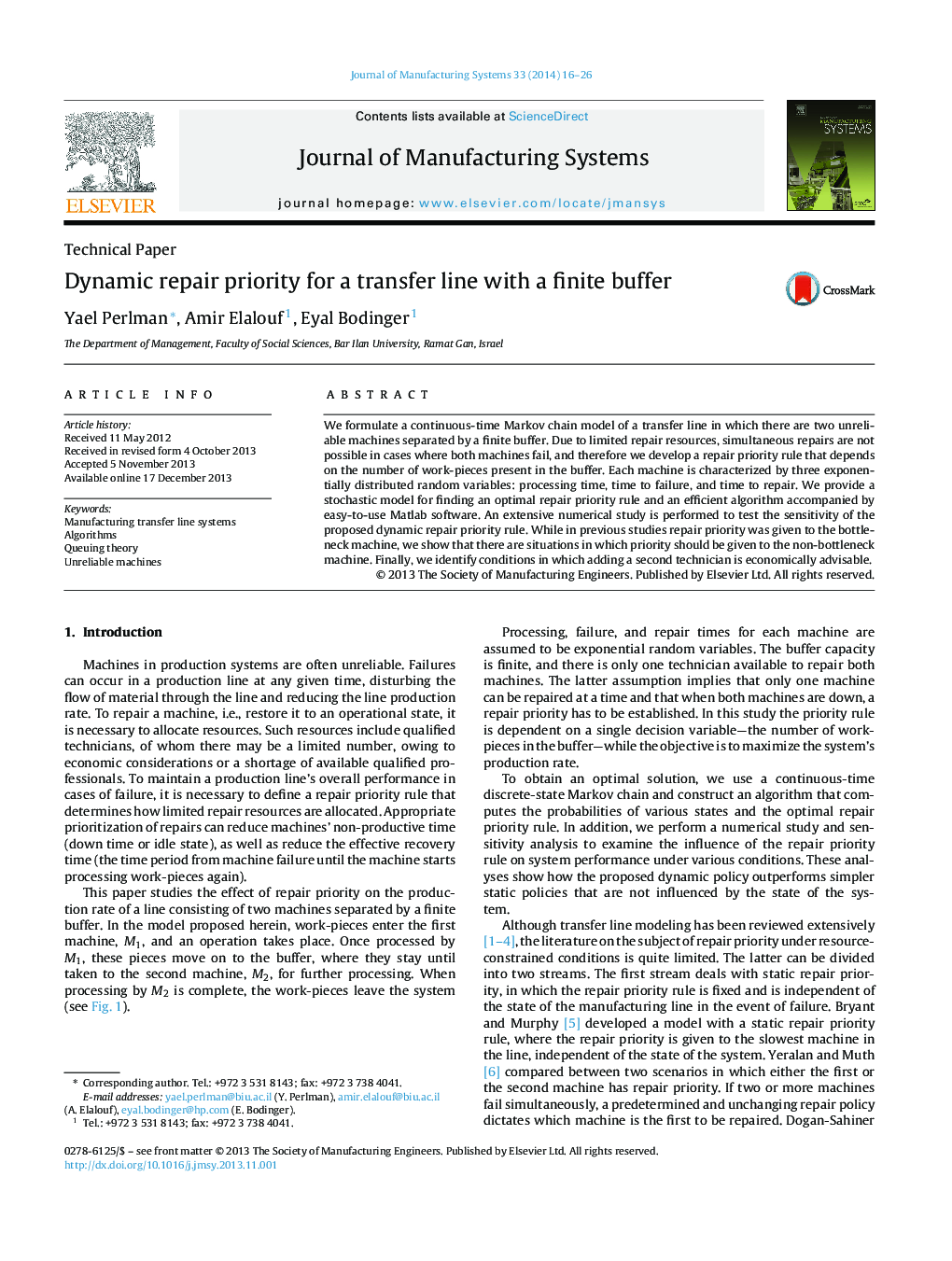| Article ID | Journal | Published Year | Pages | File Type |
|---|---|---|---|---|
| 1697622 | Journal of Manufacturing Systems | 2014 | 11 Pages |
•We model the effect of repair priority on the production rate of a transfer line consisting of two unreliable machines with random processing times separated by a finite buffer.•The case of one technician is solved, thus in a situation when two machines are down we set a repair priority based on the number of items in the buffer.•There are situations when the priority is given to a non bottleneck machine.•We study when adding an extra technician is economically advisable.
We formulate a continuous-time Markov chain model of a transfer line in which there are two unreliable machines separated by a finite buffer. Due to limited repair resources, simultaneous repairs are not possible in cases where both machines fail, and therefore we develop a repair priority rule that depends on the number of work-pieces present in the buffer. Each machine is characterized by three exponentially distributed random variables: processing time, time to failure, and time to repair. We provide a stochastic model for finding an optimal repair priority rule and an efficient algorithm accompanied by easy-to-use Matlab software. An extensive numerical study is performed to test the sensitivity of the proposed dynamic repair priority rule. While in previous studies repair priority was given to the bottleneck machine, we show that there are situations in which priority should be given to the non-bottleneck machine. Finally, we identify conditions in which adding a second technician is economically advisable.
